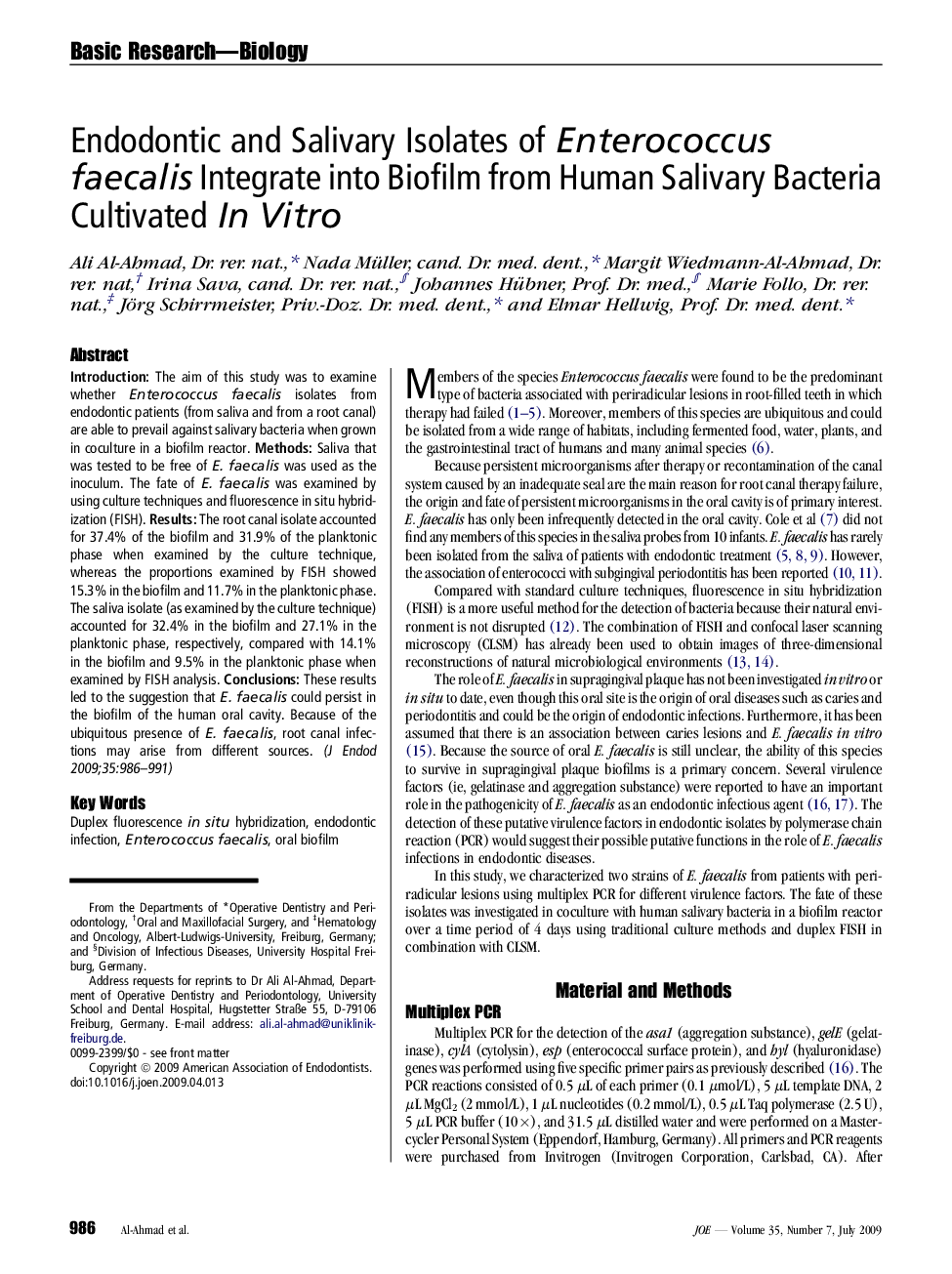| Article ID | Journal | Published Year | Pages | File Type |
|---|---|---|---|---|
| 3148512 | Journal of Endodontics | 2009 | 6 Pages |
IntroductionThe aim of this study was to examine whether Enterococcus faecalis isolates from endodontic patients (from saliva and from a root canal) are able to prevail against salivary bacteria when grown in coculture in a biofilm reactor.MethodsSaliva that was tested to be free of E. faecalis was used as the inoculum. The fate of E. faecalis was examined by using culture techniques and fluorescence in situ hybridization (FISH).ResultsThe root canal isolate accounted for 37.4% of the biofilm and 31.9% of the planktonic phase when examined by the culture technique, whereas the proportions examined by FISH showed 15.3% in the biofilm and 11.7% in the planktonic phase. The saliva isolate (as examined by the culture technique) accounted for 32.4% in the biofilm and 27.1% in the planktonic phase, respectively, compared with 14.1% in the biofilm and 9.5% in the planktonic phase when examined by FISH analysis.ConclusionsThese results led to the suggestion that E. faecalis could persist in the biofilm of the human oral cavity. Because of the ubiquitous presence of E. faecalis, root canal infections may arise from different sources.
